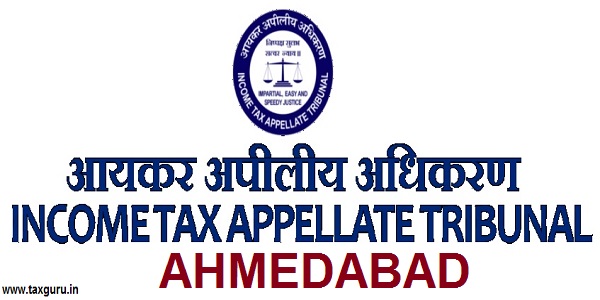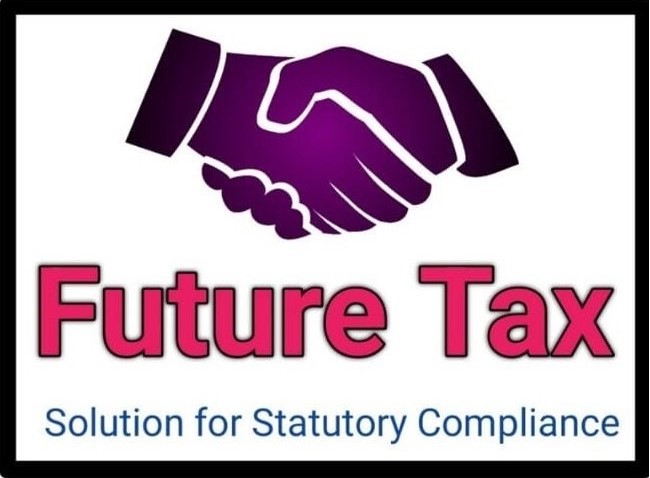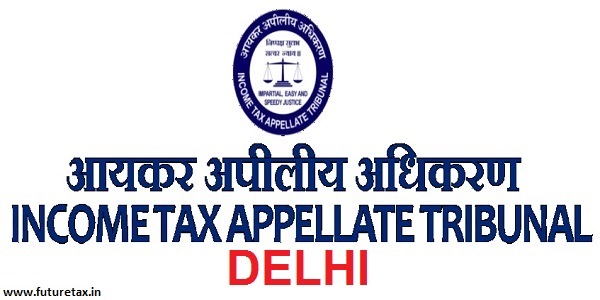
Section 43CB vs AS-7/AS-9 on Revenue Recognition for Real Estate Developers in Tamil
- Tamil Tax upate News
- March 13, 2025
- No Comment
- 61
- 19 minutes read
DCIT Vs Aaryan Buildspace LLP (ITAT Ahmedabad)
ITAT Ahmedabad order on Applicability of section 43 CB vs AS-7, AS-9, recognizing revenue on transfer of ownership for real estate developers
Relevant Legal Provisions
Section 43CB of the Income-tax Act, 1961
- Introduced by Finance Act, 2018, effective from 01.04.2017 (retrospective).
- Applicable to profits and gains from construction contracts or contracts for providing services.
- Mandates revenue recognition on a Percentage Completion Method (PCM) basis as per ICDS (Income Computation and Disclosure Standards) notified under Section 145(2).
Section 43CB(1): “The profits and gains arising from a construction contract or a contract for providing services shall be determined on the basis of percentage of completion method, in accordance with the income computation and disclosure standards notified under sub-section (2) of section 145.”
ICDS-III (Construction Contracts)
- Prescribes the PCM for recognition of revenue in construction contracts.
Accounting Standards (AS):
1.AS-7 (Construction Contracts):
- Applies to construction contractors.
- Revenue recognized based on PCM linked to project milestones.
2.AS-9 (Revenue Recognition):
- Applies to sale of goods, rendering of services, and real estate developers, where significant risks and rewards of ownership are transferred.
ICAI Guidance Note on Accounting for Real Estate Transactions (2012, Revised):
- Real estate developers should apply AS-9 for revenue recognition.
- Revenue recognized when substantial risks and rewards of ownership are transferred, usually upon registration of conveyance deed and handover of possession.
2. Brief facts:
- Assessee: Aaryan Buildspace LLP
- Business: Real estate development.
- Project: “ARYAN OPULENCE- development on own land.
- Method of Revenue Recognition:
- Followed AS-9 and ICAI Guidance Note.
- Recognized revenue upon execution of registered conveyance deed and transfer of possession.
- Assessment Year: 2018-19
- Returned Income: Rs. 1,92,62,080/-
- Scrutiny assessment conducted.
- AO held that:
- Assessee was engaged in a construction contract, and revenue should be recognized on PCM as per Section 43CB.
- Treated customer advances of Rs. 28.30 crores as revenue, increasing taxable income to Rs. 4,01,23,650/-.
- Addition made: Rs. 2,08,61,570/-
3. Issues Before the ITAT
- Whether Section 43CB applies to a real estate developer constructing and selling units on its own land?
- Whether the AO was correct in adopting PCM instead of AS-9 for revenue recognition?
- Whether the assessee’s revenue recognition method was consistent with law and ICAI guidance?
4. Assessee’s Arguments
- Assessee is a real estate developer, not a construction contractor.
- Owns the land and undertakes development at its own risk.
- Follows AS-9 and ICAI Guidance Note, recognizing revenue upon transfer of possession and registration of sale deed.
- Revenue authorities had accepted this method in earlier and subsequent years (principle of consistency).
- Advances from customers are not contract revenue but part of sale consideration.
5. AO’s Contentions
- Assessee engaged in construction activity, akin to a construction contract.
- Section 43CB mandates PCM for income recognition.
- Advances from customers should be treated as revenue under PCM, in line with ICDS-III.
6. Findings and Observations of ITAT
6.1 Applicability of Section 43CB
- Section 43CB applies only to:
- Construction contracts, or
- Contracts for providing services.
- These involve contractors undertaking projects on behalf of third parties for a contractual consideration.
6.2 Difference Between Developer and Contractor
- Contractor:
- Does not own the land.
- Constructs for a third party under a contract.
- Revenue recognition follows PCM (AS-7).•
- Developer:
- Owns the land.
- Develops at own risk, sells completed property.
- Revenue recognition follows AS-9 (transfer of significant risks and rewards).
6.3 Legislative Intent of Section 43CB
- To align with AS-7 and ICDS-III for construction contracts.
- Not applicable to developers selling units on their own land.
6.4 ICAI Guidance Note (2012, Revised)
- Clarifies AS-9 governs real estate transactions for developers.
- Revenue is recognized on transfer of ownership and possession, not on percentage completion.
6.5 Principle of Consistency
- Revenue accepted the same method in earlier assessments.
- No material change in facts to warrant a deviation.
7. Conclusion and Ruling
- The AO’s reliance on Section 43CB and PCM was misplaced.
- Assessee correctly followed AS-9 and ICAI Guidance Note, recognizing revenue on transfer of significant risks and rewards.
- CIT(A)’s deletion of the addition upheld.
- Appeal of Revenue dismissed.
8. Key Takeaways
1. Section 43CB applies exclusively to construction contracts or service contracts, not to real estate developers.
2. Real estate developers, owning and selling property on their own land, follow AS-9, recognizing revenue on transfer of ownership.
3. Consistency in accounting methods accepted by the Revenue cannot be disturbed without valid reason.
4. Advances from customers in real estate projects are not contract revenue under Section 43CB but part of sale consideration.
FULL TEXT OF THE ORDER OF ITAT AHMEDABAD
The present appeal has been filed by the Revenue against the order of the Commissioner of Income Tax (Appeals)-11, Ahmedabad [hereinafter referred to as “CIT(A)”] dated 08.05.2021 for the Assessment Year (AY) 201819, wherein the CIT(A) deleted the addition of Rs.2,08,61,570/- made by the Assessing Officer [hereinafter referred to as “AO”] under Section 43CB of the Income Tax Act, 1961 [hereinafter referred to as “the Act”] by applying the Percentage Completion Method (“PCM”) for revenue recognition.
Facts of the Case:
2. The assessee, Aaryan Buildspace LLP, engaged in the business of real estate development, filed its return of income for AY 2018-19, declaring a total income of Rs.1,92,62,080/-. The case was selected for scrutiny, and notices under Section 143(2) and Section 142(1) of the Act were issued. The assessee was developing a real estate project named “ARYAN OPULENCE” on its own land and followed Accounting Standard-9 (“AS-9”) and the ICAI Guidance Note on Real Estate Transactions (2012, Revised) to recognize revenue on execution of conveyance deeds and possession transfer. During the relevant year, 27 units were sold, and revenue was recognized accordingly. The AO, in his assessment order dated 24.04.2021, held that since the assessee was engaged in a “construction contract”, its income should have been computed under Section 43CB of the Act, which mandates revenue recognition on a Percentage Completion Method (PCM) basis. The AO treated the customer advances of Rs.28,30,86,301/- crore as revenue and computed the total taxable income at Rs.4,01,23,650/-, making an addition of Rs.2,08,61,570/-.
3. The assessee preferred an appeal before CIT(A), who deleted the addition, holding that:
- The assessee is a real estate developer, not a construction contractor, and hence, Section 43CB of the Act does not apply.
- The assessee followed AS-9 and the ICAI Guidance Note, which provide that revenue is recognized only when significant risks and rewards are transferred through a registered sale deed and possession handover.
- The AO incorrectly applied PCM, which is applicable only to construction contractors and not to real estate developers.
- The method of accounting followed by the assessee had been accepted in previous years (A.Y. 2015-16, 2017-18) and could not be arbitrarily changed.
4. Aggrieved by the order of CIT(A), the Revenue filed an appeal before us with the following ground of appeal:
a) In the facts and on the circumstances of the case and in law, the Id. CIT(A)has erred in deleting the addition of Rs.2,08,61,570/-, in view of provision of section 43CB of the Income Tax Act.
5. During the course of hearing before us, the Departmental Representative (DR) contended that the assessee had entered into an agreement of sale specifying stage-wise payments, which made it a “construction contractor” rather than a real estate developer. The DR further contended that section 43CB of the Act does not distinguish between different classes of contractors and hence applies to both construction contractors and real estate developers acting as contractors. The DR also stated that since advances were received and substantial work was completed, PCM should be applied, and the AO was justified in making the addition. The DR argued that the judicial precedents relied on by the CIT(A) were for assessment years before the introduction of Section 43CB of the Act and, therefore, not applicable.
6. The Authorized Representative (AR), representing the assessee, contended that the addition made by the AO was erroneous and legally unsustainable. The AR emphasized that the assessee is engaged in the business of real estate development and constructs residential flats on its own land, thereby distinguishing itself from a construction contractor providing services to third parties. It was submitted that the assessee retains ownership of the land and develops housing projects independently, selling completed units to buyers through legally executed sale deeds/conveyance deeds. Since the assessee does not undertake construction on behalf of any third party, its activities do not fall under the ambit of construction contracts, and consequently, Section 43CB of the Act has no application to the present case.
7. The AR relied on the order of CIT(A) and stated that at during the appellate proceedings before the CIT(A), it was submitted that real estate developers are required to follow Accounting Standard-9 (AS-9) “Revenue Recognition,” which prescribes revenue recognition upon the transfer of significant risks and rewards of ownership.
7.1. The AR also brought to our attention that the assessee had consistently followed the same revenue recognition policy since its inception, and the department had accepted this method in earlier assessments for AYs 2015-16, 2017-18, and 2019-20. There was no change in facts or circumstances in the current year that would justify a deviation from the established accounting method. The AR placed on record the copy of assessment orders passed by the same AO for the AY 2021-22 indicating that the AO has not raised any objection in the method of accounting adopted by the AO.
7.2. In support of its arguments, the AR placed reliance on multiple judicial precedents by way of written submission. These judicial precedents include:
– Decision of Co-ordinate Bench in the case of ITO v. Shivalik Buildwell (P) Ltd. (ITA No. 1698/Ahd/2009, Order dated 05.08.2011), which was affirmed by the Hon’ble Gujarat High Court in the case of Shivalik Buildwell (P) Ltd. (40 Taxmann.com 219, 2013). The Bench held that real estate developers’ profits arise only upon the transfer of title, and advances received from customers cannot be treated as trading receipts in the year of receipt.
– Decision of Co-ordinate Bench in the case of Unity Construction v. ITO (ITA No. 1577/Ahd/2008, Order dated 28.07.2011), where it was held that once a revenue recognition method is accepted by the department in earlier years, it cannot be arbitrarily rejected in subsequent years.
– Decision of Co-ordinate Bench in the case of DCIT v. Maxworth Infrastructure P. Ltd. (ITA No. 202/Del/2018, Order dated 21.10.2021), where the Bench held that the PCM, as applying AS-7 applies strictly to construction contracts and not to real estate developers.
8. We have carefully considered the arguments of both parties and perused the material on record. The core issue in this appeal is whether the assessee, a real estate developer, was required to follow the Percentage Completion Method under Section 43CB of the Act or could recognize revenue based on AS-9 and the ICAI Guidance Note.
8.1. The AO’s reliance on Section 43CB of the Act is misplaced because this provision is applicable only to construction contracts and contracts for providing services, whereas the assessee is a real estate developer engaged in constructing and selling residential units on its own land. The legislative intent behind Section 43CB of the Act and its placement within the framework of the Act clarify that it governs income recognition for contractors undertaking construction projects for clients, not for developers executing real estate projects on their own account. Section 43CB of the Act was introduced through the Finance Act, 2018, with retrospective application from 01.04.2017, to regulate the computation of income from construction contracts and contracts for providing services. The section explicitly mandates that profits and gains from a “construction contract” or “contract for services” must be determined on the basis of the PCM in accordance with the Income Computation and Disclosure Standards (ICDS). The phrase “construction contract” is critical to understanding the section’s applicability, as it indicates that the provision applies only to contractors executing projects on behalf of a third party, where a contractual obligation exists. A construction contract, in accounting and legal parlance, refers to an agreement where a contractor undertakes to execute construction work for a specified price under a contract with a customer. These contracts can include fixed-price contracts, cost-plus contracts, and time-and-material contracts, but they inherently require the contractor to perform work for another party. Section 43CB of the Act aligns with this understanding, as it follows the accounting principles established in AS-7 (Construction Contracts), which applies solely to contracts where a contractor undertakes obligations for a third party. The assessee is not a contractor but a real estate developer engaged in constructing and selling units on its own land. The crucial distinction between a contractor and a developer lies in ownership of the land and the nature of contractual obligations. A contractor undertakes construction on behalf of another party under a contract and does not own the land on which construction takes place. The project belongs to the customer, and the contractor merely executes the work as per the terms of the agreement. A developer, in contrast, owns the land, undertakes the project at its own risk, and sells completed units to customers. The buyer does not engage the developer for “construction services” but purchases a completed asset from the developer. The transaction is one of sale of property, not a contractual construction assignment.
8.2. Since the assessee does not provide construction services to any third party under a contract, it does not fall within the ambit of Section 43CB of the Act, which is specifically designed to regulate the revenue recognition of contractors executing construction projects for clients rather than developers selling self-constructed properties.
8.3. The Accounting Standard (AS) applicable to a business further reinforces the distinction. AS-7 (Construction Contracts) applies only to construction contracts where revenue is recognized based on project milestones and the Percentage Completion Method (PCM). Since Section 43CB of the Act adopts the PCM as the prescribed method, it is clear that this section was meant to align with AS-7, which governs the accounting treatment for construction contracts. AS-9 (Revenue Recognition), on the other hand, applies to real estate developers and mandates that revenue should be recognized when the transfer of significant risks and rewards of ownership takes place. The assessee follows AS-9, as it recognizes revenue only when conveyance deeds are executed, and possession is handed over to buyers. The Institute of Chartered Accountants of India (ICAI) has also clarified in its Guidance Note on Accounting for Real Estate Transactions (2012, Revised) that real estate developers should follow AS-9, not AS-7. Thus, the AO’s attempt to apply Section 43CB of the Act, which mirrors AS-7, is fundamentally flawed.
8.4. The assessee’s method of revenue recognition is consistent with ICAI’s AS-9 and the Guidance Note, both of which allow revenue recognition only upon sale deed execution and possession transfer.
8.5. The DR’s contention that the assessee is a contractor is misplaced, as it fails to recognize the fundamental distinction between a contractor executing a construction project for a client and a real estate developer constructing and selling units on its own land. The assessee is not providing a service to a third party under a contractual obligation but is developing a project at its own risk and selling completed units to buyers. In contrast, a contractor undertakes construction for another party based on predetermined specifications. The DR’s assertion that Section 43CB of the Act does not differentiate between a real estate developer and a contractor is incorrect. A careful reading of Section 43CB of the Act makes it evident that it applies exclusively to “construction contracts” and “contracts for providing services”—terms that inherently require the existence of a contractual obligation between the service provider (contractor) and the recipient (client). The assessee’s business model does not involve entering into construction contracts but rather the sale of completed units. The fact that the agreement specifies stage-wise payments does not convert the nature of the transaction into a construction contract. Advances received from customers are not “contract revenue” but part of the consideration for the ultimate sale of property. The DR’s contention that the judicial precedents relied upon by the CIT(A) relate to periods before the introduction of Section 43CB of the Act and are therefore not applicable is flawed. The principle that real estate developers must recognize revenue upon the transfer of ownership and not on a percentage completion basis has been established through long-standing jurisprudence, which remains applicable even after the introduction of Section 43CB of the Act.
8.6. The judicial precedents relied upon by the assessee conclusively establish that revenue from real estate development is taxable only upon the transfer of title and possession. The principle of consistency must be followed. The Revenue had accepted the same method in earlier and subsequent assessment years, and there is no material change in facts warranting a deviation.
8.7. In view of the above, we find no infirmity in the order of the CIT(A), who rightly deleted the addition made by the AO.
9. Accordingly, the appeal of the Revenue is dismissed.
Order pronounced in the Open Court on 7th March, 2025 at Ahmedabad.




